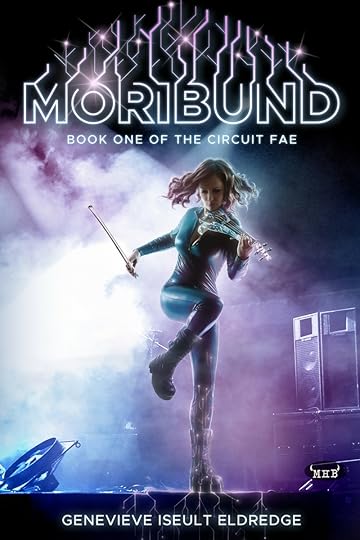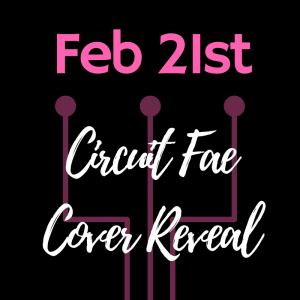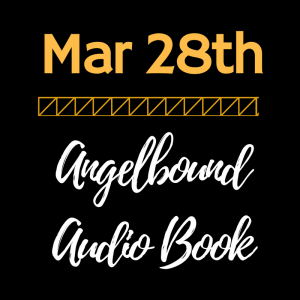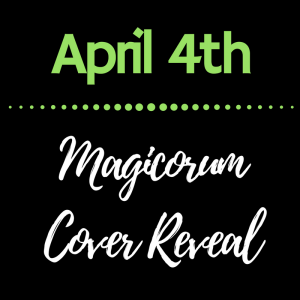Genevieve Iseult Eldredge's Blog, page 18
March 29, 2017
Go, Go, LGBTQ Ranger!
WARNING: This blog post contains SPOILERS for the 2017 movie Power Rangers. For a non-spoily review, check our my colleague, Kyle’s excellent review here!
Recently, there’s been some backlash from the LGBTQ community because a few sources like Hollywood Reporter and ABC News claimed that one scene in the new Power Rangers movie “breaks down barriers” when it comes to LGBTQ characters.
You can catch up on these stories here:
And on some of the Twitter backlash here
First, let’s consider the scene:
Unable to morph into their armor, the Rangers hit upon the idea that they should “share their stories” so they can get to know one another and function better as a team. Seems legit. Each, except Kimberly, tells a sympathetic and realistic story about their struggles.
When Zack assumes that Trini must be having “boyfriend troubles,” Trini looks uncomfortable. “Girlfriend troubles?” Zack presses, and Trini noncommittally shrugs.
Okay. Yeah… Umm… It’s no wonder the LGBTQ community exploded in outrage over the claims that the entire movie is “breaking down barriers” or “pivotal” when 1. The moment is one part of one scene and 2. It’s pretty noncommittal.
But here’s the thing.
I agree that it’s naïve at best to think that one scene in ANY movie could ever break down all the barriers LGBTQ community faces, and I’m not here to say that the LGBTQ community shouldn’t be outraged over such a wild claim. We should.
But I want to step away from that for a second because all that outrage clouds what that scene actually DOES do—and that’s to normalize a young woman’s struggle and journey to find her sexuality.
Because when Trini tacitly admits to liking girls, the other Rangers don’t freak. They don’t look at Trini sideways. No one bats an eyelash, except Zack, whose eyelash batting is more in the camp of wow, that sounds really hard than OMG, you’re gaaaaaay? You don’t LOOK gay! Even the other female characters don’t freak out. There’s no ridiculousness about the gay agenda, Big Gay, or the fear of being magically transformed into a lesbian.
And that is so utterly refreshing.
Instead, the other teens see Trini’s struggle as totally normal. Not freakish. Not an abomination or against the will of [insert name of Cosmic Nice Guy here].
So while the scene is in no way “groundbreaking” or “barrier-breaking,” it has merit for an entirely different reason.
It treats finding one’s sexual identity as a natural, albeit difficult but totally normal part of life—no more or less earth-shattering than the fact that Zack struggling to take care of his sick mom or Jason struggling to fix his relationship with his dad.
To me, that’s telling that maybe one day, being gay or lesbian or bi won’t have to be such a huge deal. And to me, that’s a big part of what the LGBTQ community is really seeking—acceptance for who we are.
As always, thank you for reading!
~GIE
If you enjoyed this blog post, please share it!
Never miss another blog post. Sign up here!
Find me at Monster House Books here!
The post Go, Go, LGBTQ Ranger! appeared first on Monster House Books.
March 22, 2017
Why Write Lesbian Heroes?
I’ve been asked a lot lately why I write lesbian heroes. The answer seems simple: I’m gay and I’m part of the LGBTQ community. Makes sense, right? But the more I get asked this question, the more I think that answer really is too simple.
It’s easy to say “Well, I’m gay,” and just leave it at that. But here’s the thing: Growing up, I never had any heroes who were like me.
Growing up, my favorite heroines were Princess Leia, Buffy, Sarah Connor, Eowyn.
I was a huge Star Wars fan. Epic fantasy has always been in my blood, and I was super excited to see a badass space princess alongside Luke Skywalker and Han Solo. Princess Leia was out there saving the galaxy (and oftentimes, her male sidekicks). She was powerful, both on and off the battlefield, she was smart and sassy and spoke her mind, she was capable, and she didn’t settle for anything less than justice. She was a princess, but she wasn’t afraid to get her hands dirty. In short, she rocked.
Then there was Buffy. I’m dating myself a little here because I’m referring to the movie starring Kristy Swanson (though Sarah MG’s Buffy was also tres cool). Who could forget the Buffster, half girly-girl/half badass slayer? She fought hard, loved harder, and pretty much smashed the patriarchy. She, too, rocked.
Sarah Connor. Who could forget Linda Hamilton’s transformation from plucky, determined heroine to gun-toting, muscle-bound babe? She threw down with Arnie and never gave up. Also, she totally Terminated that mofo.
Then there was Eowyn from The Lord of the Rings. She fought alongside all the fiercest warriors in Middle Earth. She singlehandedly slew the Witch-King of Angmar when no man could even touch him. She even dressed as a man. Then she married one.
And there it was.
I loved Princess Leia and Buffy and Sarah Connor and Eowyn, but at the end of the day, they went all went home with men. In many ways, they were very much like me. But they weren’t like me. Not completely.
Growing up gay, I was disappointed every time my favorite heroine ended up with a man. It seemed like everyone in my life was straight–from my real-life heroes right down to my fictional heroes. If the people I admired most were all straight, who was I to be gay?
So that, my pretties, is why I write lesbian heroes. So young gay women don’t ever have to ask that question.
Thank you for reading!
~GIE
If you liked this post, please share it.
Never miss a blog post! Sign up here!
Sign up for our Monster House Books newsletter here!
The post Why Write Lesbian Heroes? appeared first on Monster House Books.
March 15, 2017
Write Right: Dialogue Tags
I’ve been an editor for eight years now, and I’ve noticed that one of the hallmarks of a newer, inexperienced writer is “fancy” dialogue tags.
For some reason, many newer writers feel the need to spice up their tags. Maybe it’s that their creative writing instructors told them that said is too boring or that they should try to be original or shouldn’t repeat themselves.
Whatever the reason, I often feel like these authors go to the thesaurus, look up said, and then pepper their writing with all kinds of fancy tags like postulated, posed, discussed, shared, announced, declared, avouched, promulgated, and other ten-cent words.
Nothing makes an editor or a reader cringe more than this. Why? Because fancy tags are just that—fancy. They call attention to themselves. And thus, they detract from your dialogue.
For example:
“That’s Matt over there,” Joe announced.
“Oh, I know Matt,” Sally shared.
“Let’s go say hi,” Joe stated.
“No!” Sally admonished.
It’s awkward in the extreme, overwrought, and it shows a lack of sophistication in your writing. In short, it screams to your reader that you are an amateur.
The fact of the matter is that said is really the best bet. Said melts into the background and isn’t obtrusive. It doesn’t call attention to itself. It lets your dialogue have the spotlight.
But because writing is a complex art, using said exclusively isn’t the answer either. In fact, you can see that repeating said here would also be awkward.
“That’s Matt over there,” Joe said.
“Oh, I know Matt,” Sally said.
“Let’s go say hi,” Joe said.
“No!” Sally said.
So now what?
Now we use said in combination with what is called a dialogue beat—an action attributed to a specific character.
“That’s Matt over there,” Joe said.
“Oh, I know Matt,” Sally said.
“Let’s go say hi.” Joe took her arm and steered her toward Matt.
Sally jerked away. “No!”
See how the beats actually illuminate the character and the story? Here, we can tell that Sally is upset by what’s happening. Also, the saids here melt into the background. They leave the reader’s focus on the dialogue and action, not on a fancy tag.
As with any technique, using dialogue beats vs. tags is more art than science. A good trick is to read your work aloud to see if it flows well and sounds natural.
As always, thank you for reading!
~GIE
If you enjoyed this post, please share it!
Never miss another blog post. Follow me here!
Sign up for the Monster House Books newsletter here!
The post Write Right: Dialogue Tags appeared first on Monster House Books.
March 8, 2017
GIE’s Review: Of Fire and Stars
The post GIE’s Review: Of Fire and Stars appeared first on Monster House Books.
March 1, 2017
Genres Are Like Cornflakes
A wise author once told me that buying a book is like buying a box of cereal. You walk down the aisle, looking at the boxes like they’re book covers, past boxes of Cheerios, Crunch Berries, Lucky Charms, Wheaties, until at last you find what you’re looking for—Cornflakes!
Yes! You know exactly what you’re getting just by grabbing that box.
Now imagine you get home and open that box, and there are Apple Jacks in there instead of Cornflakes. You’d probably be pretty annoyed. Maybe you even like Apple Jacks—goodness knows, I do—but at that moment when you grabbed that box of Cornflakes, what you wanted was—CORNFLAKES!
Your book is a lot like that. And readers come to your book with two things: 1. Genre expectations and 2. A desire to be entertained, whether that entertainment takes the form of being romanced, terrified, or gaining some escape and wonderment.
So how do we make sure we are delivering on the promise of our genre—that when a reader grabs our epic fantasy, they GET epic fantasy?
One way is the cover. Since that’s often up to your publishing house, I can’t say much except this: a good cover is worth its weight in solid-gold Cornflakes.
What I can speak to are genre expectations and the question we authors so often wrestle with: How do you serve your genre while creating something absolutely brand spanking new? How do you dance to the tune while incorporating your own moves?
Here’s what’s worked for me:
1. Read in your chosen genre
There’s no better way to learn the tropes and commonalities of your genre than by reading in it. Read the classics, read the new stuff, read the stuff you’ve heard was terrible but is a big seller. Read it all.
CAVEAT: Don’t fall into the trap of thinking you can’t read while you’re writing. All that means is you think your voice isn’t developed enough. If it’s not, the answer is to write more. Not less.
2. Read Like a Writer
Many of us read for pleasure or relaxation. Some read to be entertained, to be terrified or romanced or to have our thoughts engaged. But to read like a writer is to look for the technique hidden beneath the words—and, believe me, good technique is 100% invisible.
So how do you see technique when it’s invisible? Like this: when you’re reading and you find yourself frantically turning pages or feeling an emotion, ask, How is the author accomplishing this? Then pay special attention to the word choices, the structure, the paragraphing. Is the author creating tension by using short, snappy sentences? Is she evoking emotion by using certain words? Is the dialogue fast-paced? What verb tense is the story told in?
CAVEAT: Steal the technique and make it your own. Don’t try to copy
3. Read Outside Your Genre
Cross-genre is becoming more and more popular because of its wide appeal. This is why a lot of Hollywood blockbusters have action, romance, thriller aspects, maybe a touch of horror. Because the more universal emotions (love, fear, hatred, jealousy) you can pluck the strings of, the more you connect with your reader–and the more readers you can connect to.
CAVEAT: Don’t try to force a genre trope into your story at the expense of the story.
4. Ask a Reader
Crit group, crit group, crit group. I cannot emphasize this enough. Have a critique group, a group of people who are responsive, who know your genre, and who are avid readers. Let their knowledge work for you. They’ve read 5,000 romances. They can tell you if you’re hitting the key marks, if your hero is too jerky and pushy, if your heroine is whiny.
CAVEAT: Choose your crit partners carefully. Your mom or dad or bff might not be the best person for the job since s/he might be more inclined to only telling you the Good Stuff. You need someone who can also tell you the Bad Stuff.
5. Address the Tropes
Address. Not bow down to, not surrender to, not mindlessly adhere to. But address them. Because the reader comes with two things, and the first is expectations.
Genre readers like to know what they’re getting into. Most of them buy FOR the genre. I read epic fantasy because I like the epic quest, the battles, the courtly intrigue, the high language. When I buy the book with a LARPing group on the front and some sweeping mountains in the back, it better have most of this stuff in there.
Why? Because when I pick up a box of Cornflakes, I want Cornflakes. If I get it home and there are Apple Jacks in there, I’m not going to be a happy camper.
So address those tropes and then shatter them. But don’t ignore them. Hell. No. Stephanie Meyer, whom some tout as writing the worst vampire book ever, still addressed the issue of vampires and sunlight. We’re told why Edward and the other vamps can walk out in the sun. It’s not ignored.
By addressing it, she gives a nod to the genre expectations and lets her readers know that she knows what these expectations and tropes are—and she’s choosing to change them. Thus, it’s a matter of choice not ignorance. To fail to address genre expectations without explanation is to risk looking like you don’t know your genre.
6. Twist the Tropes, Turn Them, Break Them
All else aside, I think it’s absolutely imperative to do something new. We owe it to our genres to push the boundaries, to give the reader what they want–to pay homage to the old, but also usher in the new.
Genre readers are well read. They’ll known in an instant if your elven archer is a knockoff of Legolas or if your child prodigy is Ender in a cheap disguise.
Develop your own unique characters. Your own unique voice.
That thing you’re afraid of? That’s what you’ll build your legacy on.
So, how does this whole Cornflakes metaphor shake out? Well, in the end, we write what we’re passionate about, and the best way to do that is to learn our genres top to bottom so we can address genre expectations. Thus, we make it so that when the reader opens our box of Cornflakes, she doesn’t mind if there are a few Crunch Berries in there. They just sweeten the deal.
As always, thanks for reading!
~GIE
If you enjoyed this post, please share it!
Never miss a blog post! Sign up here!
Follow me right here at Monster House Books!
The post Genres Are Like Cornflakes appeared first on Monster House Books.
February 21, 2017
COVER REVEAL: Moribund!
High school sophomore Syl Skye is an ordinary girl. At least, she’s trying to be. School photographer and all-around geek, she introverts hard and keeps her crush on sexy-hot glam-Goth star Euphoria on the down-low. But when a freak accident Awakens her slumbering power, Syl is forced to accept a destiny she never wanted—as the last sleeper-princess of the fair Fae.
Instantly, her introverted world shatters, and she’s thrust into an ancient war between the fair Fae and the dark Fae—a war she wants no part of. But when the dark Fae harness the killing magic in technology to enslave the city and then choose the school as their battleground, what’s a girl to do?
Fight like hell. But Awakening her sleeper-princess powers is no easy task.
Syl’s only chance lies with her secret crush, Euphoria, who seems to know more than she’s letting on. But then, Syl discovers that Euphoria is really a dark Circuit Fae sent to destroy her. Worse, the more they fight, the more Syl Awakens, and the more their attraction grows. With mean girls and magic and dark Fae trying to kill her, it’ll take more than just “clap if you believe in fairies” to save Syl’s bacon—not to mention, her heart.
MORIBUND is currently available for pre-order on Amazon, B&N, iBooks, and Kobo.
The post COVER REVEAL: Moribund! appeared first on Monster House Books.
February 16, 2017
Feb-April Release Calendar
Coming Tuesday, February 21st is the cover reveal for MORIBUND, Book 1 in the Circuit Fae Series. We are so excited for this reveal, we can hardly stand our bad selves!!!! Be sure to visit us on the web site, Facebook and Twitter to catch all the action!
On March 28th, we’re having the official launch for the audio book version of ANGELBOUND by Christina Bauer. And like any launch, we’ll have plenty of giveaways to celebrate. Stay tuned!
Folks told us how much they loved the cover for WOLVES & ROSES, Book 1 in the Fairy tales of the Magicorum. We have great news for you: the cover for Book 2, SHIFTERS & GLYPHS, will be revealed on April 4th. You won’t want to miss this one!
And that’s just the stuff that’s happening in the next eight weeks. Check back often for more updates…and thanks for supporting MHB!
The post Feb-April Release Calendar appeared first on Monster House Books.
February 15, 2017
Circuit Fae: Moribund on Pinterest!
In preparation for writing Circuit Fae: Moribund, Christina asked that I do some Pinterest boards with inspirations for Moribund’s different characters. I’d never been a big Pinterest user before, but like many people first dipping a toe into the wonderful world of Pinterest, I was instantly hooked.
I fell down the rabbit hole of Pinterest! I whipped up boards for Moribund’s heroines, Syl Skye and Rouen Rivoche as well as for the bad guys, Agravaine and Fiann Fee. And you know what? Those pics really helped.
I printed them out and put them up near my desktop while I wrote. They really conveyed the attitude and inspiration of the characters, and they stayed there the entire time I was working on Moribund. I have new pictures for Circuit Fae 2 up right now.
I’ve kept the boards a secret for a long time, but now I’m excited to share them with you! I’ve opened them up to the public. Check them out here!
As for other Pinterest boards, I’m also an avid Bullet Journal fan, so you can see my BuJo board. In addition, I have an “I Ship It” board for all my fantasy ships, a Celtic knotwork board for the Irish girl in me, and a few others under construction.
As always, thank you for reading!
Best,
~GIE
If you enjoy my Pinterest boards, please Follow me here!
Feel free to give me feedback on Circuit Fae, Pinterest, and whatever strikes your fancy here!
Or sign up for the always awesome Monster House Books newsletter here!
The post Circuit Fae: Moribund on Pinterest! appeared first on Monster House Books.
February 11, 2017
2 Great Blog Tours – 1 Place To Sign Up!
Feb 21st: Cover reveal for Circuit Fae MORIBUND
This book has only been posted with a description and it’s ALREADY getting great rankings on retailers! Things only get better from here because the cover is GORGEOUS and will be revealed on February 21st. Want to join in the fun? If you’ve got a social media account, you can sign up today!
March 28th: Blog tour for the audio book version of ANGELBOUND
You’ve asked for more options for the audio book launch of our best seller, and we’ve responded: YA Book Tours is now hosting an additional tour! There are a limited number of extra spaces available for this event, so be sure to RSVP today!
Want to stay up-to-date on our latest offers and tours? Sign up for our newsletter!
The post 2 Great Blog Tours – 1 Place To Sign Up! appeared first on Monster House Books.
February 8, 2017
GIE’s Review: Wildthorn
GIE’s BRIEF SYNOP
Wildthorn by Jane Eagland is the story of Lousia Cosgrove growing up in 19th century England where girls are supposed to look pretty and get married and do as they’re told. Against all odds and societal norms, Lousia has aspirations to become a doctor. But when she confides in her family, she finds herself locked away in an insane asylum, her dreams, her life, her very identity stripped away from her.
Her only hope lies in Eliza, and the love that grows between them.
GIE’s TAKE
Beautifully descriptive and emotive, Wildthorn seems written in the vein of Sarah Waters’s Fingersmith, and although not as Byzantine or tightly plotted, Wildthorn still delivers quite a punch. The lesbian relationship is not center stage, but it is an integral part of Louisa’s character–a part she comes to embrace as she realizes the benefit of truth over living a lie.
If you liked Wildthorn, you might like Fingersmith .
The post GIE’s Review: Wildthorn appeared first on Monster House Books.







